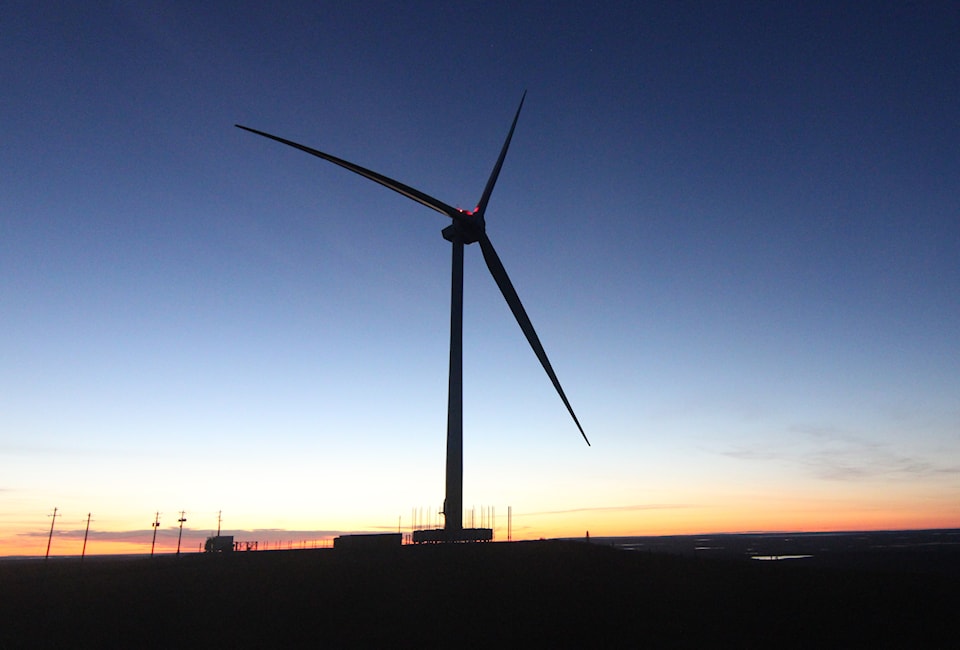The rising cost of fuel has been a recurring theme for the NWT Power Corporation (NTPC) over the past year. On May 9, NTPC announced that it had applied to the Public Utilities Board for an increase in power bills of between 4.7-14.4 per cent, depending on region, to cover the rising cost of diesel.
As of April, diesel was averaging $1.65 per kilowatt hour but electricity rates were based on diesel prices from December 2021, which averaged $1.18, according to the power corporation.
In December 2023, NTPC was allowed to add just over one cent per kilowatt hour to power bills to help recover the losses from rising diesel prices.
If approved, new rates will be in effect as of June 1.
In June 2023, the GNWT approved a one-time lump sum of $15.2 million to NTPC to help offset climbing fuel costs from the previous year and a half.
The power corporation's last general rate application, an entirely different process, resulted in increases for customers of between 6.2 per cent and 8.8 per cent over two years starting in 2022-23.
Revenue growth
The power corporation realized higher revenues in 2022-23 compared to the previous year and met budget expectations of close to $118 million with sales of power inching up almost two per cent to $112.3 million.
However, operating expenses were 13 per cent higher than forecast. Fuel and lubricants (34 per cent) composed the highest category, followed by salaries and wages (22 per cent), supplies and services (21 per cent), amortization (13 per cent) interest expenses (eight per cent), among other lesser costs.
By the end of the 2022-23 fiscal year, the corporation's $7.4 million surplus allowed the accumulated surplus to reach $189 million.
Use of hydro power in the NWT fell to 68 per cent in 2022-23 from 76 per cent in 2021-22, primarily due to lower water in the Snare River basin. Diesel usage consequently rose to 24 per cent, up from 17 per cent in 2021-22.
NTPC customers experienced 12.2 power outages on average in 2022-23, far exceeding the national average of 2.4 outages per customer. However, the length of the average outage in the NWT was just 23 minutes compared to the two hours and 18 minutes elsewhere across Canada.
Movement in Hay River
The power corporation is projecting that a long-running saga to assume full control of power distribution and transmission in Hay River will finally conclude in 2024-25.
The Town of Hay River has spent several years attempting to transfer power assets from Naka Power (formerly Northland Utilities) to NTPC. In late March, the PUB ruled that "no harm" would come from the switch and that it is in the public interest.
Project advancement
The $70-million Inuvik High Point Wind project -- offering 3.5 MW of power via a wind turbine and a battery electric storage system -- went into service in September 2023. It is designed to meet close to 30 per cent of Inuvik's energy needs.
The wind turbine could reduce greenhouse gases by 6,000 tonnes and displace more than three million litres of diesel per year.
In March 2024, Sachs Harbour's new "high efficiency" diesel plant went into use. It had a price tag of $13.8 million. of which $7.4 million came from the federal government.
Corporate assets
NTPC comprises more than 200 employees across 26 communities. The corporation's assets, valued at over $450 million, include 26 diesel plants, five solar arrays, three hydroelectric systems, a natural gas plant and a battery storage system.
Generating capacity was 133 MW in 2022-23, with the Inuvik wind project later raising that to 136.5 MW.
Power to 43,000 NWT customers comes by way of 565 km of transmission lines and 375 km of distribution lines extending across 9,790 power poles.
Fact file
NTPC residential power rates as of April 1 (per kilowatt hour)
Thermal zone (Aklavik, Colville Lake, Deline, Fort Good Hope, Fort Liard, Fort McPherson, Fort Simpson, Gameti, Inuvik, Jean Marie River, Lutsel K’e, Nahanni Butte, Paulatuk, Sachs Harbour, Tsiigehtchic, Tuktoyaktuk, Tulita, Ulukhaktok, Whati, Wrigley)
Customer pays: 31.08 cents + a 0.9 cent stabilization rate rider, partially offset by a 0.35 cent GRA shortfall rider refund
Actual cost: 70.16 cents
Additional kWh (over 600) between April 1 and Aug. 31: 70.71 cents.
Norman Wells
Customer pays: 31.08 cents + a 0.9 cent stabilization rate rider, partially offset by a 0.35 cent GRA shortfall rider refund
Actual cost: 54.84 cents
Additional kWh (over 600) between April 1 and Aug. 31: 55.39 cents.
Behchoko/Dettah
Customer pays: 31.08 cents + a 0.99 cent stabilization rate rider and a 0.51 cent GRA shortfall rider
Actual cost: 35.92 cents
Additional kWh (over 600) between April 1 and Aug. 31: 36.98 cents.
Fort Resolution/Fort Smith
Customer pays: 24.52 cents + a 0.7 cent stabilization rate rider and a 0.36 cent GRA shortfall rider
Actual cost: 24.52 cents
Source: NWT Power Corporation
Fact file
Naka Power (formerly Northland Utilities) residential power rates as of May 1
Yellowknife
23.72 cents/kWh + a 0.43 cent rate rider
Hay River/Enterprise (hydro zone)
32.42 cents/kWh + a 0.78 cent rate rider
Wekweeti/Sambaa K’e/Ft. Providence/Dory Point/Kakisa (thermal zone)
84.15 cents/kWh + 3.87 cent rate rider — the GNWT’s rate equalization program is applicable to non-government residential and general service customers in this zone.
Source: Naka Power
